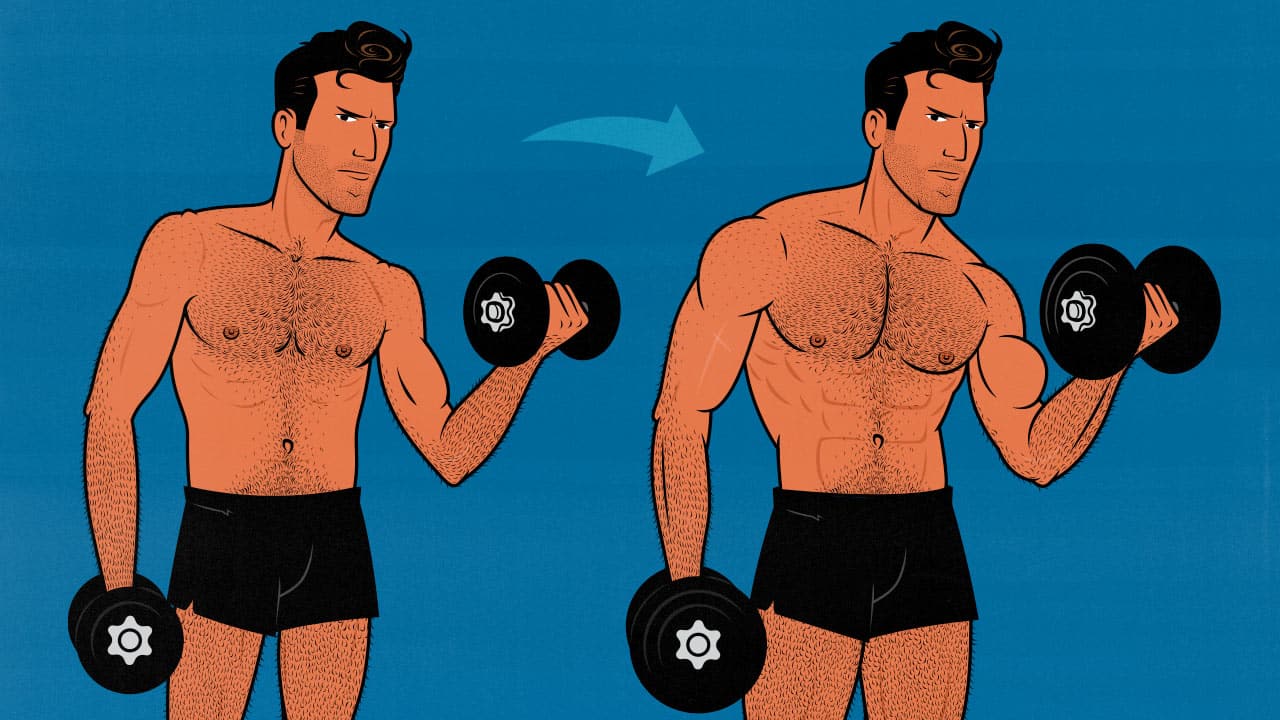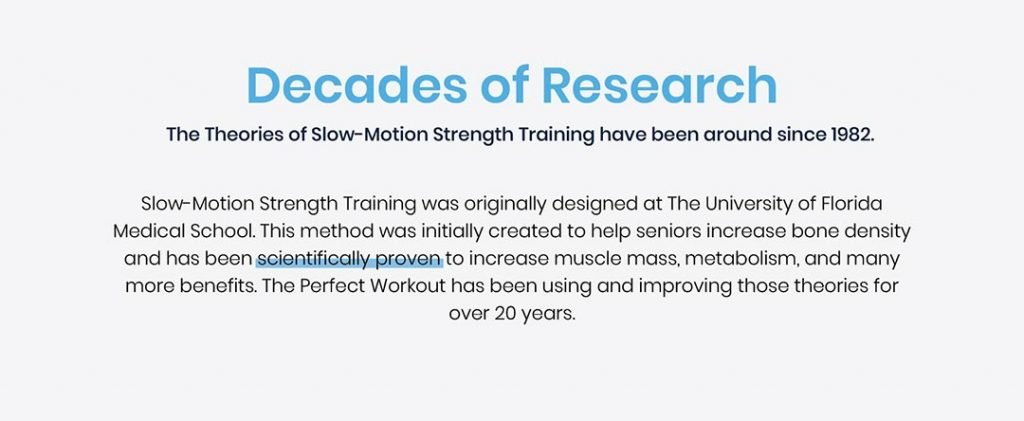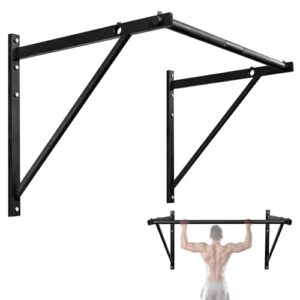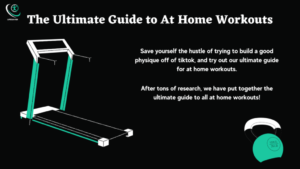Slow Motion Strength Training involves performing weight-lifting exercises at a reduced speed. This technique maximizes muscle tension and fosters strength gains.
Slow Motion Strength Training is a unique approach to resistance workouts, emphasizing slow, controlled movements to increase muscular activation. By lifting and lowering weights more slowly, typically taking several seconds in each direction, your muscles spend more time under tension—key for building strength and endurance.
This method also aims to reduce the risk of injury, as it encourages better form and joint alignment. With each movement deliberate and focused, you’re less likely to rely on momentum, which often leads to better muscle engagement and growth. Ideal for those looking to enhance their fitness regimen without the wear and tear of traditional workouts, Slow Motion Strength Training can be a game-changer for beginners and seasoned athletes alike.

Credit: bonytobeastly.com
The Science Behind Slow Motion Training
Slow motion strength training is more than a passing trend. This approach, grounded in robust scientific principles, enhances your workouts. Let’s break down the science that makes slowing down your reps so effective.
Biomechanics Of Slower Repetitions
In slow motion training, every movement counts. By decelerating the pace, your muscles must work harder against gravity. This method reduces momentum, compelling the muscles to remain contracted throughout the entire range of motion.
- More control: A slow pace prevents jerky movements, leading to better form and reduced injury risk.
- Increased intensity: Slower reps mean muscles work longer, leading to greater strength gains.
- Improved balance: Slower movements engage stabilizing muscles, enhancing overall balance and coordination.
Muscle Fibers And Time Under Tension
Your muscles are composed of different fiber types. Slow motion training targets both slow-twitch and fast-twitch fibers.
| Fiber Type | Characteristic | Impact of Slow Training |
|---|---|---|
| Slow-twitch | Endurance-focused | Increases stamina |
| Fast-twitch | Strength-focused | Improves power |
Time under tension (TUT) is the duration a muscle is under strain during a set. By extending TUT with slower reps, muscles undergo more wear and tear at a cellular level. This stimulates recovery and growth.
- Enhances muscle growth: Extended TUT leads to microscopic damage, prompting repair and growth.
- Improves muscle endurance: Longer TUT increases muscle stamina over time.
- Boosts metabolic rate: More muscle work equals more energy spent, even at rest.
Credit: www.businessinsider.com
Comparing Traditional And Slow Motion Workouts
When exploring different workout routines, you might find yourself torn between traditional workouts and slow motion strength training. Your choice can impact your fitness results significantly. Here, we’ll dive into the core differences between these two popular methods, focusing on intensity, volume, and recovery times. These factors play essential roles in shaping your workout routine and its effects on your body.
Intensity And Volume Differences
Traditional workouts often prioritize a higher volume of reps and sets with moderate intensity.
Slow motion training, on the other hand, focuses on a lower number of reps at an increased intensity.
| Type of Workout | Intensity | Volume |
|---|---|---|
| Traditional | Moderate | High |
| Slow Motion | High | Low |
- This means lifting heavier weights in a controlled, slow manner.
- Active muscle engagement is for longer periods during each rep.
The slower pace increases tension time, which can lead to muscle growth and strength gains.
Recovery Time Considerations
Recovery is crucial for muscle growth and overall health.
- Traditional workouts might require shorter recovery times between sessions.
- Slow motion training often demands longer recovery periods due to the intense muscle engagement.
This is because muscles worked to their max need more time to repair and strengthen.
| Type of Workout | Recovery Time |
|---|---|
| Traditional | 24-48 hours |
| Slow Motion | 48-72 hours |
While traditional workouts might allow for daily training, slow motion workouts require spaced-out sessions to maximize results.
Benefits Of Slow Motion Strength Training
Discover the transformative power of Slow Motion Strength Training, an innovative exercise regime that intensifies workouts. This well-kept secret revolutionizes conventional fitness paradigms. Focusing on slow, controlled movements, this training maximizes muscle engagement, offering remarkable benefits.
Enhanced Muscle Growth
Slow Motion Strength Training ignites rapid muscle development, unlike traditional workouts that may miss key growth opportunities.
- Stimulates deeper muscle fibers.
- Increases time under tension.
- Promotes efficient muscle fatigue.
- Fosters superior muscle adaptation.
Improved Strength And Endurance
Witness measurable gains in both strength and stamina. Slow Motion Strength Training pushes the body to surpass its limits.
| Training Aspect | Impact |
|---|---|
| Strength | Boosts overall power |
| Endurance | Enhances long-term performance |
Reduced Risk Of Injury
With a focus on control and precision, Slow Motion Strength Training significantly cuts down injury risks. Each movement is a deliberate act, ensuring safety comes first.
- Minimizes joint stress.
- Protects against muscle strain.
- Improves balance and coordination.
- Teaches proper form and technique.
Unlock the potential of each workout session through the intricacies of Slow Motion Strength Training. Experience a fitness journey that not only molds the physique but also fortifies the mind.
Crafting The Perfect Slow Motion Routine
Embracing Slow Motion Strength Training transforms workouts into concentrated, muscle-building sessions. It’s about precision and control. Here’s how to craft a routine that maxes out muscles, not minutes:
Selecting The Right Exercises
- Pick compound movements like squats, push-ups, and rows.
- Choose exercises that target multiple muscle groups for efficiency.
- Ensure a balanced routine that works all body parts.
- Start with 5-7 exercises to maintain focus and intensity.
Determining Optimal Speed And Tempo
- Aim for 10 seconds up, 10 seconds down.
- Keep movement smooth and continuous.
- Avoid momentum to maintain muscle tension.
- No pause at the top or bottom of the motion.
Incorporating Progression And Variability
| Weeks | Progression | Notes |
|---|---|---|
| 1-4 | Master form with lighter weights | Focus on technique, not load |
| 5-8 | Gradually increase weight | Add small increments each session |
| 9+ | Introduce new exercises | Keep muscles adapting |
Vary workouts to challenge different muscles and avoid plateaus. Mix in new exercises every few weeks. Ensure steady progression for continuous gains.
Nutrition For Slow Motion Training Success
Embarking on a Slow Motion Strength Training journey necessitates not only dedication in the gym but also careful attention to the fuel you provide your body. The right balance of nutrients supports the muscle recovery and growth elicited by the high-intensity and low-speed contractions typical of slow motion workouts. Nutrition for Slow Motion Training Success is critical, highlighting the role of a well-planned diet in building strength and enhancing performance.
Macronutrient Requirements
Your body’s macronutrient needs are the foundation of any successful training regimen. Before, during, and after each workout, your muscles demand energy. Here’s a guide to what your plate should look like:
- Proteins: Essential for muscle repair and growth. Lean meats, legumes, and dairy products are excellent choices.
- Carbohydrates: They are your body’s main energy source. Opt for complex carbs like whole grains and vegetables.
- Fats: Good for long-term energy, especially helpful in longer, endurance-focused training sessions. Sources include nuts, seeds, and avocados.
Hydration And Muscle Function
Water is vital for all bodily functions, including muscle contraction and flexibility. Dehydration can lead to muscle fatigue, impacting your performance. Aim to drink:
| Time | Water Intake |
|---|---|
| Before | 17-20 ounces |
| During | 7-10 ounces every 10-20 minutes |
| After | 16-24 ounces for every pound lost |
Supplements To Complement Slow Training
While a balanced diet should be the cornerstone, certain supplements can enhance your slow motion strength training. Here are a few to consider:
- Whey Protein: A quick and convenient source of high-quality protein.
- Creatine: Can help to increase muscle mass and improve workout intensity.
- Branched-Chain Amino Acids (BCAAs): These can support muscle recovery and reduce soreness.
Real-life Success Stories And Case Studies
Discover the power of Slow Motion Strength Training through exciting real-life success stories. People from all walks of life are transforming their bodies and minds. Read on for the ins and outs of their journeys.
Transformations And Achievements
Incredible transformations showcase the effectiveness of Slow Motion Strength Training. Meet John Doe, a 45-year-old who struggled with weight and energy levels. John committed to a slow motion regimen and saw astounding results:
- Lost 30 pounds in six months
- Increased muscle strength by 50%
- Boosted energy, now feeling vibrant and active
Emma Smith, a busy mom, also shares her journey. With only two 20-minute sessions a week, Emma gained:
- Toned muscles without bulking
- Better posture, reducing back pain
- Improved endurance, effortlessly playing with her kids
These stories are mere glimpses into the life-changing benefits Slow Motion Strength Training offers.
Lessons Learned From Slow Motion Training
Slow Motion Strength Training offers valuable lessons about fitness. Participants learn the importance of:
| Lesson | Impact |
|---|---|
| Controlled movements | Prevent injury and enhance muscle growth |
| Mind-muscle connection | Improves focus and workout effectiveness |
| Patient progress | Long-term sustainability over quick fixes |
John discovered slower reps offered better results than rushing. Emma learned that intense, focused workouts could fit into a hectic schedule. Both found new strength, not just in their muscles, but in their daily lives.

Credit: www.theperfectworkout.com
Frequently Asked Questions On Slow Motion Strength Training
Does Slow Motion Strength Training Work?
Slow motion strength training effectively builds muscle, enhances endurance, and increases strength. Its focused, controlled movements lead to significant fitness improvements with reduced injury risk.
How Do You Do Slow Weighted Strength Training?
Slow weighted strength training involves choosing a moderate weight for exercises. Perform movements with controlled, slower reps, extending each phase for a count of three to five seconds. Ensure proper form and steady breathing throughout the routine. Rest adequately between sets.
Does Slow Movement Build Muscle?
Slow movement during resistance training can build muscle by increasing time under tension, which enhances muscle growth and strength gains.
What Is The Slow Lifting Method?
The slow lifting method involves performing weightlifting exercises with slow, controlled movements. This technique enhances muscle tension and can improve strength and muscular definition.
What Is Slow Motion Strength Training?
Slow motion strength training involves performing weightlifting exercises at a significantly slower pace, typically taking 10 seconds to lift and another 10 to lower the weight.
How Often Should You Do Slow Training?
For optimal results, engage in slow motion strength training 2-3 times per week, allowing for adequate recovery between sessions.
Conclusion
Embracing slow motion strength training can revolutionize your fitness journey. These deliberate, controlled movements enhance muscle gain and minimize injury risk. Remember, patience yields powerful results. Dive into this method for a refreshing, impactful routine. Give slow motion a go – your body will thank you.
















